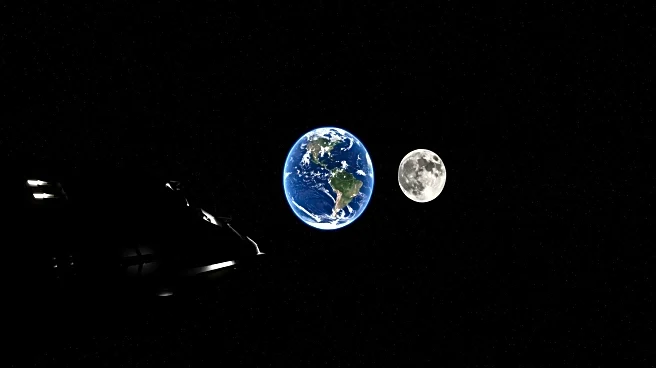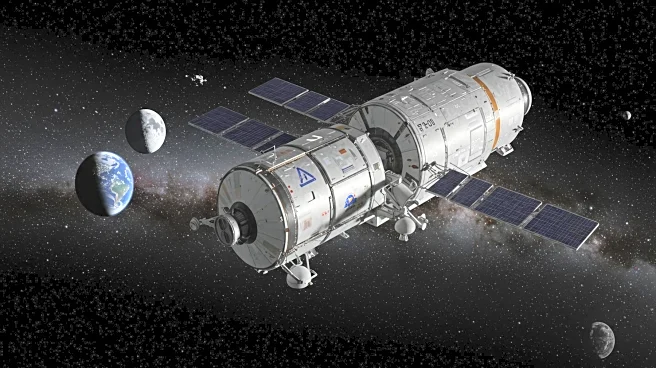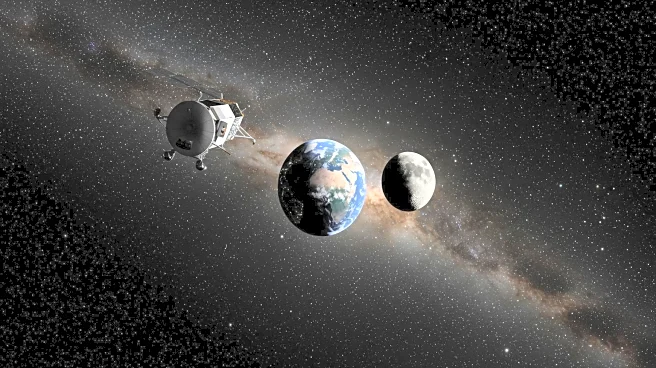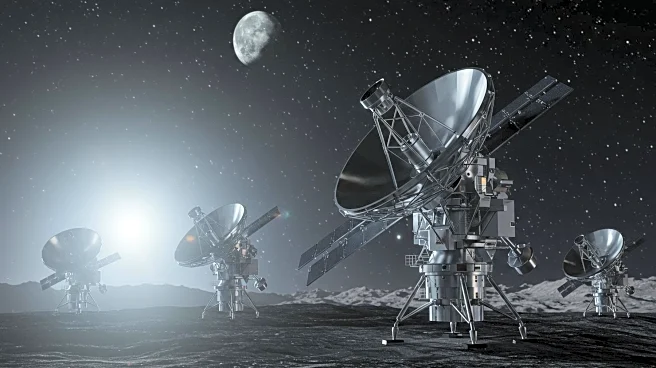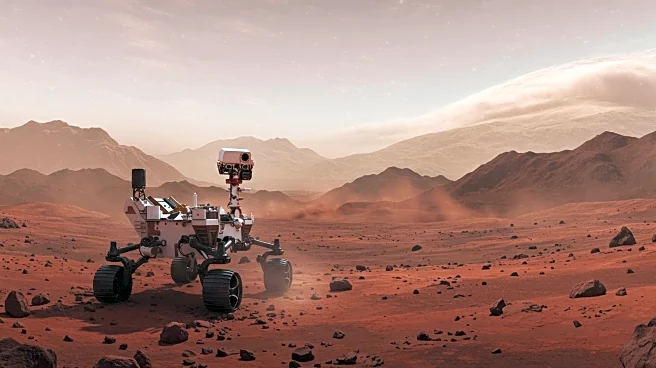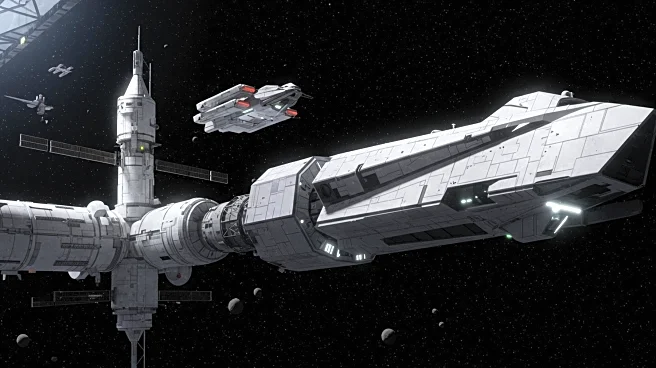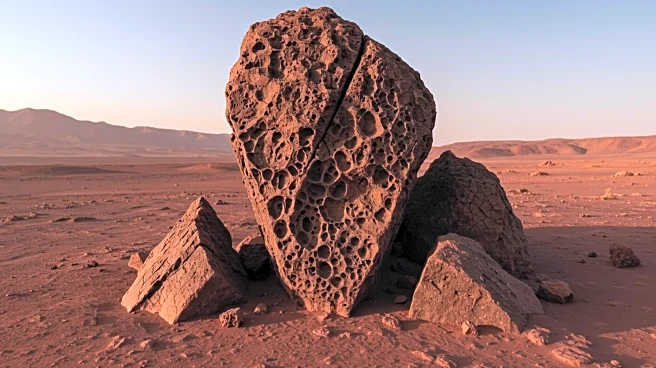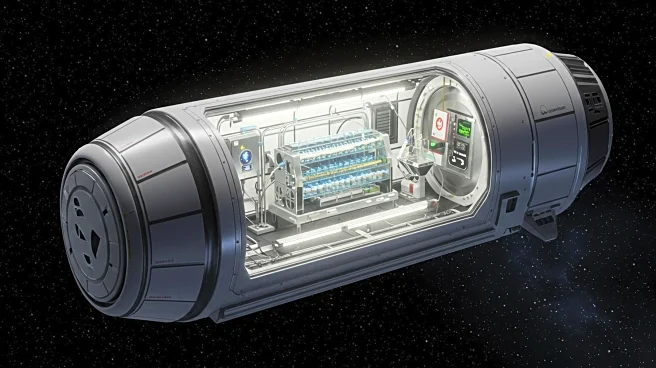What's Happening?
NASA's Jet Propulsion Laboratory (JPL) in Pasadena has confirmed that the Psyche spacecraft successfully captured images of Earth and the Moon from approximately 180 million miles away during a camera calibration exercise in July. The images, taken on July 20 and 23, depict Earth and its satellite as bright specks against the starfield of the Aries constellation. This calibration was part of a scheduled checkout of the spacecraft's multispectral imager, which will be used to study the surface of the metal-rich asteroid Psyche upon its arrival in 2029. The spacecraft, launched from NASA's Kennedy Space Center in October 2023, is currently en route to the asteroid located between Mars and Jupiter. The mission includes a gravity assist maneuver around Mars in May 2026, which will propel the spacecraft toward its final destination.
Why It's Important?
The successful imaging of Earth and the Moon by the Psyche spacecraft marks a significant milestone in NASA's ongoing exploration of deep space. This mission is part of NASA's Discovery Program, which aims to enhance scientific understanding of the solar system. The calibration exercise not only confirms the functionality of the spacecraft's instruments but also sets the stage for future scientific discoveries about the asteroid Psyche. The data collected by the spacecraft's imager, magnetometer, and gamma-ray and neutron spectrometer will provide insights into the asteroid's composition and magnetic properties, potentially offering clues about the building blocks of planet formation. The mission underscores the importance of international collaboration in space exploration, with contributions from institutions like Arizona State University and Maxar Technologies.
What's Next?
The Psyche spacecraft is scheduled to perform a gravity assist maneuver around Mars in May 2026, which will help it reach its final destination, the asteroid Psyche, by 2029. As the spacecraft continues its journey, further calibrations and system checks will be conducted to ensure all instruments are functioning optimally. Scientists and engineers will closely monitor the spacecraft's progress and prepare for the detailed study of the asteroid's surface and composition upon arrival. The mission's success could pave the way for future explorations of other metal-rich asteroids, potentially unlocking new scientific knowledge about the early solar system.
Beyond the Headlines
The Psyche mission represents a broader trend in space exploration focused on understanding the origins and evolution of celestial bodies. By studying metal-rich asteroids like Psyche, scientists hope to gain insights into the processes that led to the formation of planets and the solar system. This mission also highlights the role of advanced technology in space exploration, with the use of multispectral imaging and high-power solar electric propulsion. The collaboration between various scientific institutions and private companies reflects the growing importance of partnerships in achieving ambitious space exploration goals.
